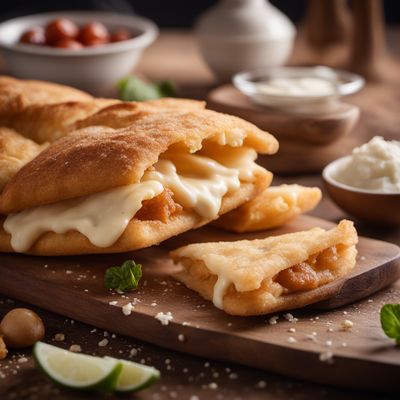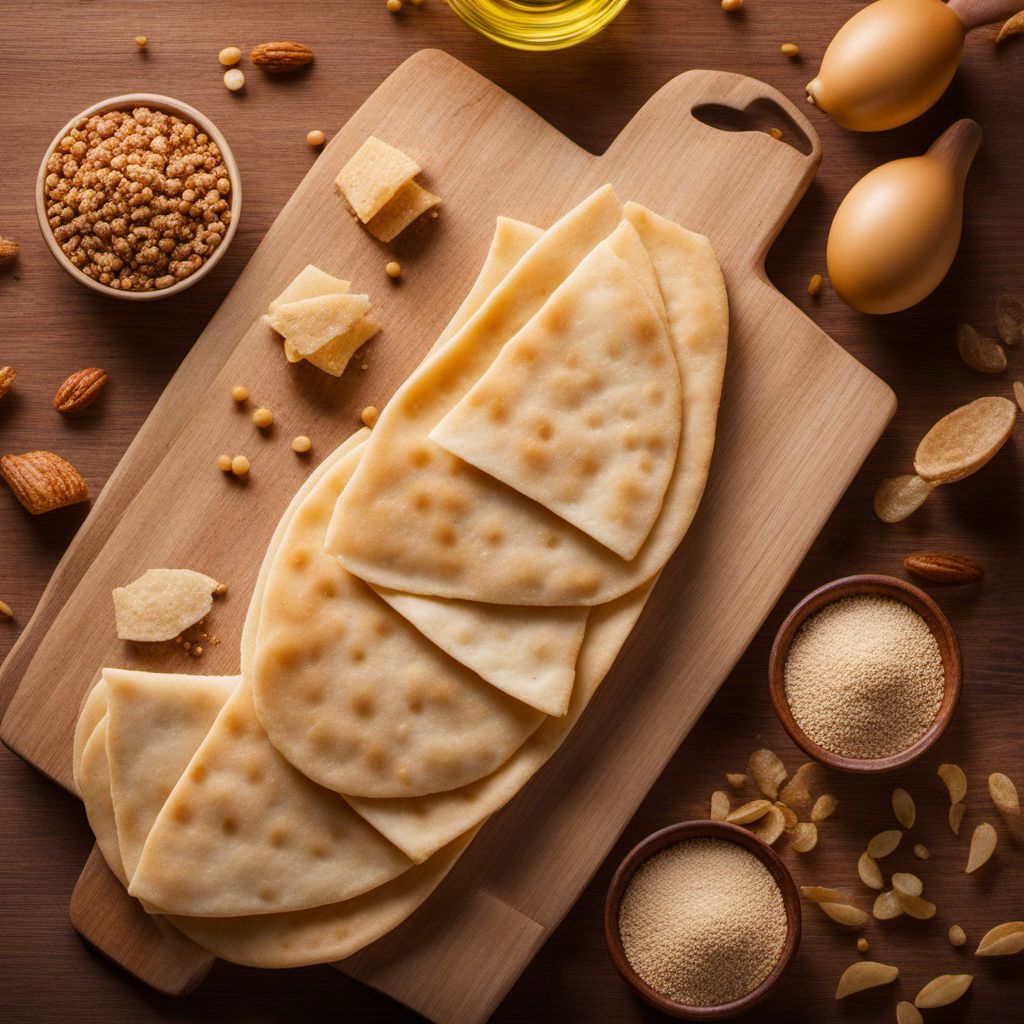
Ingredient
Unleavened or flat bread and similar
Versatile and Timeless Breads
Unleavened or flat bread is a type of bread that is made without yeast or leavening agents, resulting in a dense and chewy texture. It can be found in various shapes and sizes, such as tortillas, naan, pita, lavash, and chapati. These breads are commonly used as a base for sandwiches, wraps, or as an accompaniment to soups, stews, and curries.
Origins and history
Unleavened or flat bread has a rich history that dates back thousands of years. It has been a staple food in many cultures, particularly in regions where access to yeast or leavening agents was limited. Flatbreads have cultural significance in cuisines such as Indian, Middle Eastern, Mexican, and Mediterranean. They are often made using traditional methods and recipes passed down through generations.
Nutritional information
Unleavened or flat breads are generally lower in calories and carbohydrates compared to leavened breads. They also tend to be higher in fiber and protein, making them a more nutritious option. However, the nutritional content can vary depending on the specific type of flatbread and the ingredients used in its preparation.
Allergens
Unleavened or flat breads may contain allergens such as wheat, gluten, or dairy, depending on the recipe and ingredients used. It's important to check the label or inquire about the ingredients if you have any dietary restrictions or allergies.
How to select
When selecting unleavened or flat bread, look for ones that are fresh, soft, and pliable. Avoid breads that are dry, hard, or have a stale smell. If possible, opt for freshly made bread from local bakeries or markets for the best quality and flavor.
Storage recommendations
To maintain the freshness of unleavened or flat bread, store them in a cool, dry place, such as a bread box or pantry. If the bread is not consumed immediately, it can be wrapped in a clean kitchen towel or stored in an airtight container to prevent it from drying out. Some types of flatbreads can also be frozen for longer storage.
How to produce
Producing unleavened or flat bread at home requires basic ingredients like flour, water, and salt. There are numerous recipes available online or in cookbooks that provide step-by-step instructions for making different types of flatbreads. With practice, even amateur cooks can master the art of making delicious homemade flatbreads.
Preparation tips
When preparing unleavened or flat bread, it's important to follow the recipe instructions carefully to achieve the desired texture and flavor. Flatbreads can be cooked on a stovetop, in an oven, or on a grill, depending on the specific type of bread. They can be enjoyed plain or filled with various ingredients like meats, vegetables, or spreads. Experiment with different flavors and fillings to create your own unique combinations.
Culinary uses
Unleavened or flat breads have a wide range of culinary uses. They can be used as a base for sandwiches, wraps, or tacos. They are also commonly served alongside soups, stews, or curries to soak up the flavorful sauces. In some cuisines, flatbreads are used as a utensil for scooping up dips, spreads, or toppings. Additionally, they can be used as a crust for pizzas or as a base for appetizers like bruschetta or crostini.
Availability
Unleavened or flat breads are commonly available in grocery stores, supermarkets, and specialty food stores worldwide. They are also a staple in local bakeries and markets in regions where they are traditionally consumed.
More ingredients from this category
Recipes using Unleavened or flat bread and similar » Browse all
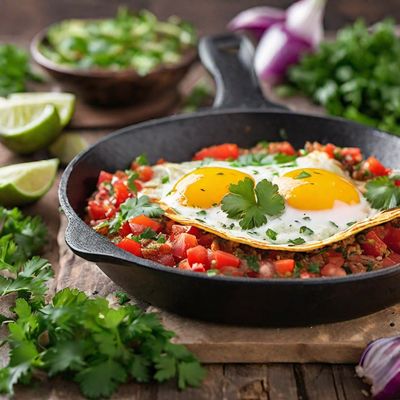
Turkish-style Huevos Rancheros
Turkish-Style Eggs with Spicy Tomato Sauce

Hazaragi-style Spiced Chicken Kathi Roll
Flavorful Hazaragi Chicken Wrap with Spices and Herbs
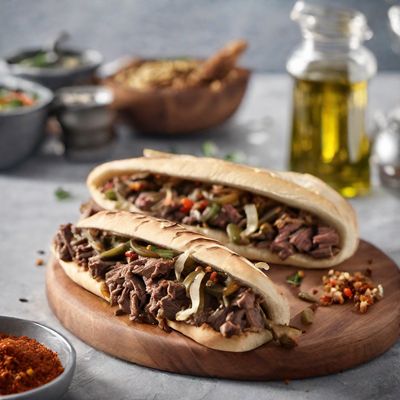
Moroccan-inspired Cheesesteak
Spiced Beef and Cheese Sandwich with Moroccan Flair
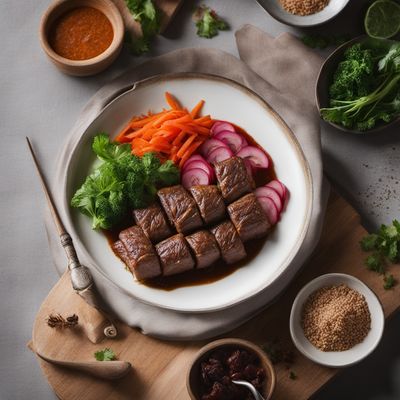
Mordovian-style Beef Rolls
Savory Beef Rolls with a Mordovian Twist

Chinese-style Cheesesteak
Wok and Roll Cheesesteak
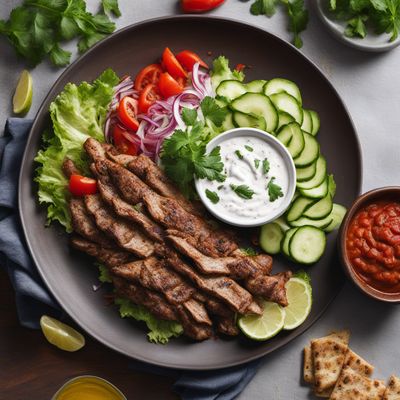
Homemade Turkish Döner Kebab
Savor the Authentic Flavors of Homemade Turkish Döner Kebab
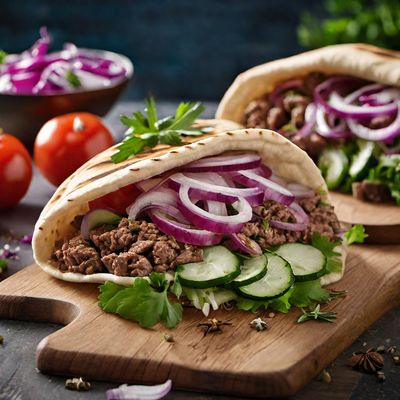
Dutch-style Gyros
Dutch-inspired Gyros: A Twist on the Classic Greek Dish
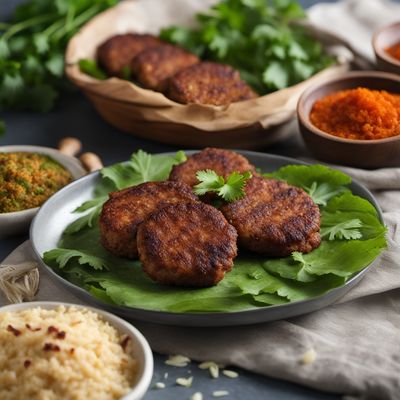
Melanesian-style Coconut Beyti Kebab
Tropical Delight: Melanesian Coconut Beyti Kebab
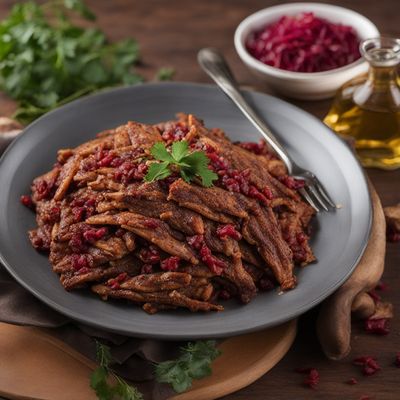
Palestinian Musakhan with Sumac Chicken and Caramelized Onions
Sumac-infused Musakhan: A Flavorful Palestinian Delight
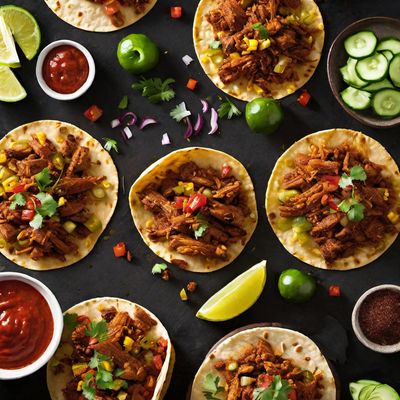
Tacos al pastor
Turkish-inspired Tacos al pastor: A Fusion of Flavors
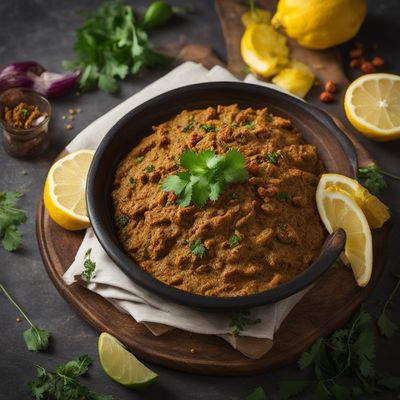
Afghan-style Spiced Pork Pâté
Savory Afghan Pork Pâté with a Spicy Twist

Moroccan-style Huevos Rancheros
Spiced Eggs with Moroccan Flavors


